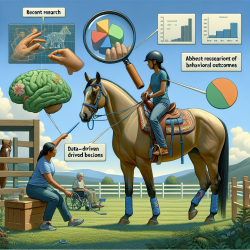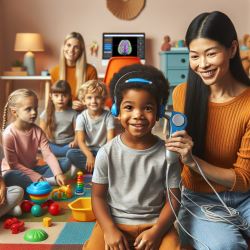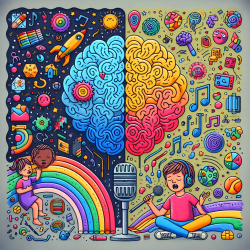Introduction: A New Era in Adolescent Obesity Intervention
As a speech-language pathologist dedicated to creating positive outcomes for children, it's crucial to stay informed about innovative approaches that enhance intervention strategies. The recent research article, "Development of an Extended-Reality (XR)-Based Intervention to Treat Adolescent Obesity," presents a groundbreaking perspective on integrating digital technologies into health interventions. This blog explores how practitioners can leverage these insights to improve adolescent obesity management.
The Power of Extended Reality (XR)
Extended Reality (XR) encompasses technologies like Virtual Reality (VR), Augmented Reality (AR), and Mixed Reality (MR). These tools create immersive environments that can significantly enhance participant engagement. The research highlights how XR can be a game-changer in obesity interventions by offering a virtual space where adolescents can engage in activities that promote healthier lifestyles.
Data-driven evidence suggests that XR interventions can potentially overcome common barriers in traditional obesity treatments, such as high dropout rates and poor long-term adherence. By providing an engaging and interactive experience, XR can motivate adolescents to adopt and maintain healthier behaviors.
Implementing XR in Practice
For practitioners looking to incorporate XR into their intervention strategies, the following steps are recommended:
- Understand Adolescent Preferences: Engage with adolescents to understand their preferences and needs. This will help tailor XR experiences that resonate with them, enhancing engagement and adherence.
- Collaborate with Caregivers and Health Professionals: Involve caregivers and health professionals in the development of XR interventions. Their insights can help create comprehensive and effective programs.
- Utilize Community-Based Participatory Research (CBPR): Employ CBPR to ensure that interventions are community-driven and culturally relevant. This approach can improve the quality and acceptability of the interventions.
- Incorporate Gamification: Use game design principles to make health interventions more engaging. Gamification can increase motivation and participation among adolescents.
Challenges and Opportunities
While XR presents exciting opportunities, practitioners must be mindful of challenges such as ensuring equitable access to technology and addressing potential gender differences in treatment preferences. It's essential to create inclusive and accessible interventions that cater to diverse populations.
Encouraging Further Research
Practitioners are encouraged to engage in further research to explore the long-term effectiveness of XR interventions. By contributing to the growing body of evidence, we can refine these technologies and maximize their impact on adolescent obesity management.
To read the original research paper, please follow this link: Development of an Extended-Reality (XR)-Based Intervention to Treat Adolescent Obesity.










